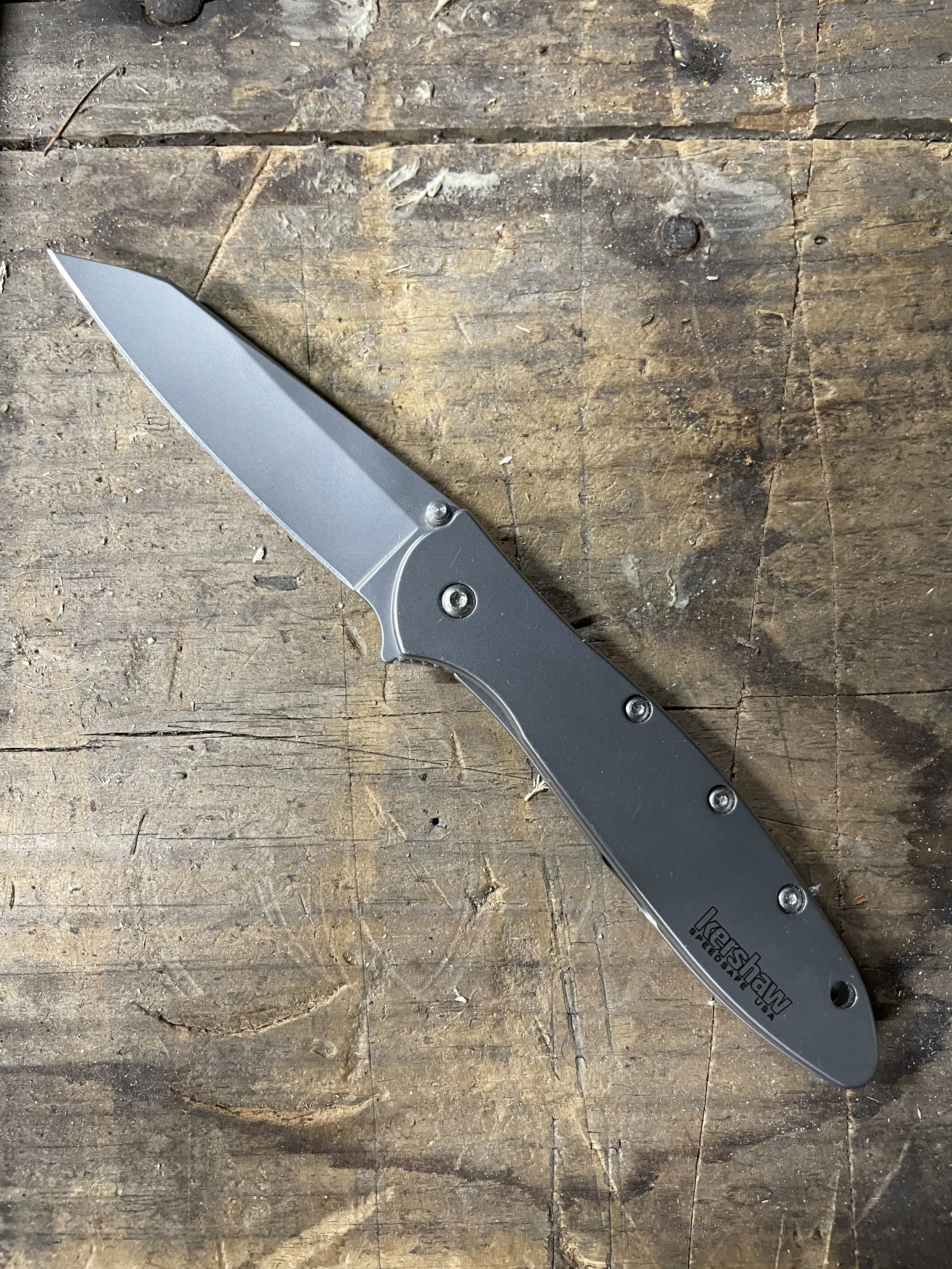The Mystery of the Kershaw Leek
Mr. Scurvy and I regularly debate all sorts of things over DM. One of our perennial topics is the Kershaw Leek. I strongly dislike this knife, especially compared to how well it sells. Mr. Scurvy correctly points out that I am missing the point. This is a knife for the masses not us. But what makes it a knife that has such a polarizing reaction?
This all came about because my father in law came to me and asked: “I have gotten back into fishing [he just recently retired] and I want to carry a knife. Do you have one for me?” Of course I did, and so I produced for him a bevy of choices. In the end it came down to the Asher Nomad and the Kershaw Leek with Reverse Tanto blade (which is better than the original). He took the Leek in a second. I was not surprised, but it was a blind test that confirmed Mr. Scurvy’s point—the Leek has real appeal.
Objectively there is a lot to like here: its thin, its sharp, it has a simple, clean look and design, it is not that big, not that heavy, and not that expensive. Looking at it as a set of bullet points, the Leek seems like it would be in my wheelhouse. The bullet points make it easy to sell Leeks. But its the long term experience that turns me off. Why?
While thin blades are always better, they are not always done right. The Leek’s blade, especially in the standard blade shape, is just too thin at the tip. Compared to something like the Dragonfly II, it is slightly pointier but much more fragile. There isn’t a lot more you can do with the additional acuity, but it is a real liability. So this is thin done incorrectly.
I am also not a fan of the overly complex deployment and safety system. The safety lock is a feature that sounds good but, in my experience, it is solely a negative. Over and over again I would go to kick the knife open only to realize that as it was in my pocket, the safety was triggered. Its pretty loose and so having it accidentally activate happens more than I would like, compared, say to the safety on something like the SOG Flash AT.
Then there is the assist. Most people aren’t knife aficionados and appreciating smooth deployment is not high on their list of joys in life. For those folks a quick authoritative snap open is pretty much all they need. Figuring out the finger yoga needed to deploy something like a front flipper is not mission critical for non-knife folks. As a result, the Leek’s overly complex deployment is not a negative but a positive.
But here is what I learned from the father in law taste test. The Leek is a good knife. If this is the average knife available in 2022, we are doing pretty good. My resistance to the design is based on knowing that there is better stuff out there, but a lot of that stuff is more expensive or more obscure. You are unlikely to find a Civivi Lumi (which hits on a lot of the same bullet points the Leek does) at a Wal-Mart.
Quick Aside
Why is it that Lumis and the rest of the excellent, overseas made, inexpensive, high quality Civivi line up is hard to find in Wal Mart? It makes no sense to me. Wal-Mart and Civivi (or at least Sencut) are made for each other like peanut butter and chocolate.
End Aside
My resistance to the Leek is not because it is bad, but because I know there is better. But that is like saying a Corvette is a bad car because you know that a Pagani exists. Of course, the Corvette is not as good as a Pagani, but it is still one hell of a car at 1/10th price.
In the end I think my resistance to the Leek is a form of snobbery or blindness that enthusiasts sometimes have. I think about the world of high end audio. These are people that are willing to track down and pay insane sums of money for an original Playstation because there is some notion that it has an unusual mix of components that make CDs sound really good (news flash—its all digital, it makes no difference), but poop on Bose because of the all the tweaking and tuning they do to make their gear sound good as opposed to sound accurate. Most of the audiophiles I know are too old to have ears that can discern the level of accuracy they claim to crave, but still they sit on the sidelines for some really juicy tunes from Bose.
Going forward I am going to make a deliberate effort to be wary of this particular enthusiast blindspot and give knives like the Leek their due. That doesn’t mean I won’t mention that there is better, but only that the fact that something is not as good as something else, doesn’t necessarily mean it is bad. To indulge though—both the Lumi and the TRM Neutron 2 are much better than the Leek and hit the same general design philosophy. The Lumi is a remarkably good knife for the money and the Neutron 2 is one of the three best production knives available. But the Leek ain’t half bad.
Amazon Links:

